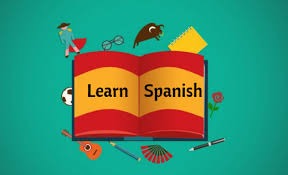How to be fluent in Spanish? Fluency is not that hard to obtain, although it is a bit difficult to be extremely fluent in a language because there is no end level to learning any language. The literal meaning of fluency is ‘with the flow’. To be able to achieve fluency in Spanish means you need to talk with a flow without hesitating and fumbling. That requires a great deal of practice and immersion with the language. Spanish and English speakers think differently, and so to be fluent means that you can think in Spanish and carve out your voice within the language. This is why fluency comes with a great depth of knowledge.
Want to know ways you can use to develop your Spanish fluency? Keep reading!
Nothing is as important as passion. Passion is the energy that keeps us going, that keeps us filled with meaning, happiness, excitement, and anticipation. Passion is a powerful force in accomplishing anything you set your mind to. If you have a passion, a goal, the desired outcome, and the motivation to learn, then you will become fluent in no time. Being passionate is key to keep up the pace with anything. So, start by defining these things very early before starting on this journey. They will help you stay motivated.

To become fluent in Spanish, you need to immerse yourself in the language and the first way of doing that is by watching Spanish movies, documentaries, shows, etc. The trick here is to put the subtitles in Spanish only and read them out in sync with the movie that you will be watching. This will give you an idea of how Spanish is spoken.

Talking with someone is the easiest way to develop fluency and conversational skills in Spanish. It opens up your mind to different ideas that you can talk about. Have a friend or a partner speak with you in Spanish. You can also find someone online, or join a group class online and reach out to your classmates to have a conversation with them in Spanish.

To let the words flow out of your mouth, you should first let the words flow out on a piece of paper. Writing is a good way to express opinions and ideas, make a journal or a diary in Spanish. Make it a habit to write daily. Apart from that, whatever you are writing, read it out loud daily.

Being able to think in Spanish—to find the right words naturally and without having to rely on mental translations—is an important step on the path to fluency, and it takes a lot of hard work to get there. It is easy for people who live in Spain, but difficult for other learners who are far off from Spanish culture and environment. For these people, they must train their minds according to their needs. You can do this by creating scenarios where you have to speak in Spanish, you can watch, and read in Spanish, talk to yourself in your head. This is a valid way to begin thinking in Spanish.

Change your phone’s default language to Spanish instead of your native language. Initially, it is going to be hard to operate it easily but eventually, you will learn to pick up the language. You can also change your social media to Spanish. This is a very effective way to immerse yourself in the language.
Reading is always useful in learning any language, it will put you one step ahead in learning Spanish. You can start by reading small stories, poems and gradually shift to novels, and other literary masterpieces. Try to read aloud and follow up with any difficult words or phrases, find their meaning, and make sentences to memorize them. This will also help with your Vocabulary which is also very vital in gaining fluency. If you don’t have a rich vocabulary bank, you will often find yourself stuck while speaking something, looking for the right word.

Talk to yourself out loud. Yes, that’s a valid way to begin to think in Spanish. Don’t translate—just talk! The more you use the language, the more likely it is that your transition to thinking will occur in an almost natural wave. Start naming items in your room, house, garden, school, or college. Start making random sentences based on any object that you see in front of your eyes while keeping a smooth flow of Spanish in your head. When you’re writing something, or watching something or listening to something, speak it out, loud enough. This will not only help keep your mind in Spanish mode but will also strengthen your pronunciation and Vocabulary.

Learning Spanish is not an easy task, it requires focus, determination, and patience. You need to consistently keep practicing Spanish daily to fully grasp it and become fluent.
Set a schedule, set clear goals, have passion and patience. You won’t learn Spanish overnight, it will take time and to stick around for that long you need to be consistent. Once you’re able to manage that, nobody can stop you from becoming fluent in Spanish or even start dreaming in Spanish!

In conclusion, you need to remember that achieving fluency in Spanish is difficult. It requires months or years of tangible conversational practice with native speakers. However, becoming fluent in Spanish is highly attainable if you are consistent and disciplined with your technique.
Buena Suerte!


